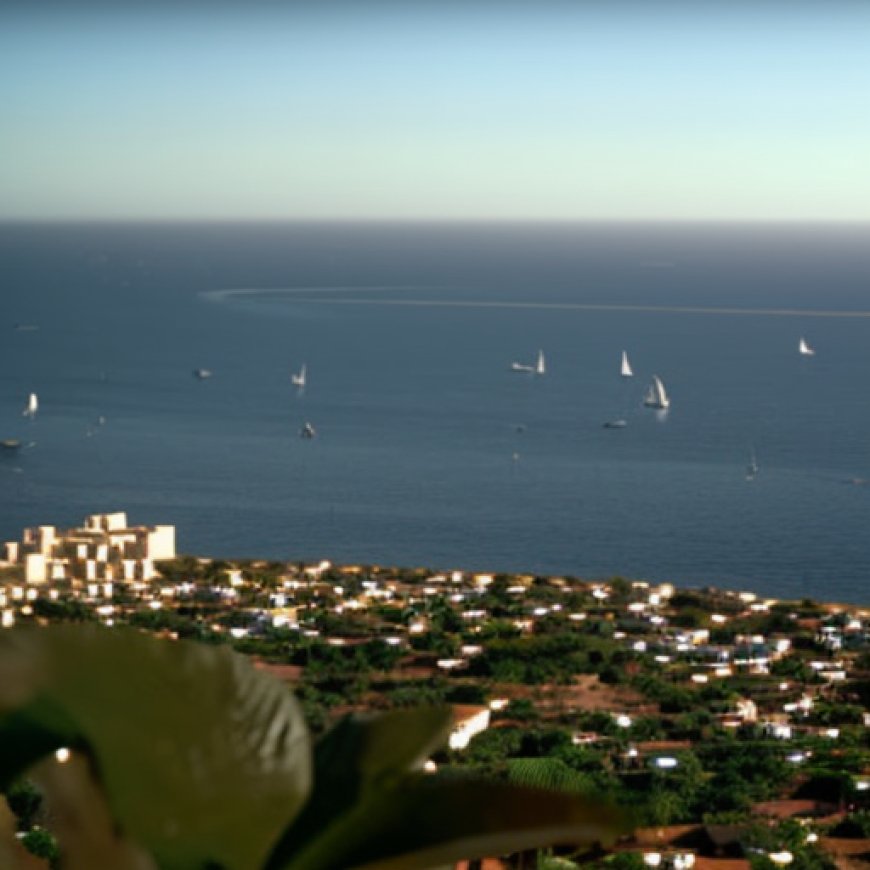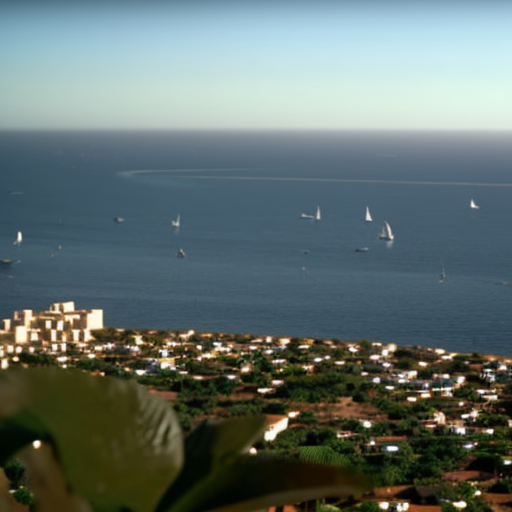The perception of climate change in Senegal coastal areas – Senegal
The perception of climate change in Senegal coastal areas - Senegal ReliefWeb


Attachments

EXECUTIVE SUMMARY
Senegal is exposed to various climate hazards, and its economy is very sensitive to climate change. Adaptation policies, even if they are voluntary, are not systematised. This is detrimental to strong and resilient socio-ecological systems. Even worse, the populations still struggle to recognise the phenomenon of climate change and the associated consequences, according to the different repertoires of cognition.
Considering this, in 2021 and 2022, Oxfam launched the African Activists for Climate Justice (AACJ) and Ford Climate Media Collaborative projects in Senegal, which aim to use communications to defend communities’ rights and change narratives in favour of economic justice and awareness of climate change. This study of The perception of climate change in Senegal was therefore carried out to provide reference elements that will form a basis for advocacy for Oxfam, its partners and the communities.
Objective
In simple terms, the study aims to understand and compare the perception of climate change in coastal areas of Senegal, with an emphasis on biodiversity, the coastal area and water resources. Consequently, nine towns and villages on the coast of Senegal, i.e.: Saint-Louis, Lompoul, Dakar (Fann), Guéréo, Bargny, Palmarin, Kafountine, Diogué and Kabrousse were chosen for this survey.
Findings
After this study, the profiles of the respondents, from a socio-demographic and socioprofessional point of view, are representative of the characteristics of Senegal as a whole. Knowledge of climate change within the communities is limited, unless it involves identifying the factual consequences and other impacts such as coastal erosion, heat waves, high winds, scarcity of fishery products, late arrival of rainfall, water supply problems etc.; this sometimes indicates confusion between climate change and deterioration of the environment, even if the qualitative survey made it possible to list the terms whereby the phenomenon is identified: “sopéeku alam bi” (deterioration of the environment), “sopéeku jaw ji (change in the climate), “sopéeku jamono ji (change in the environment) “Géej gi daffa aaye” (rough sea), “Look”, “Aaye “, “ Seer”, “ Kàajié” and “Jàw ji daa tang (warming of the environment). Consequently, if 45.6% of respondents consider that climate change is of natural origin, that is because divine punishment is indicated as the main cause, without ignoring moreover the anthropogenic factor, in particular as regards industry, described as “excessive human action”.
There is a real impact on biodiversity, in particular the poverty and salinisation of the soils. In the maritime domain, in Bargny the price of round sardinella, called locally “yaboye”, which has increased from €15 to €68 or even €75 in less than five years, shows the extent of the increasing scarcity of the main resources the communities live on. The drying up of watercourses can be seen along the coast, in particular in Guéréo, even if the problem of groundwater recharge is partly linked to the demographic weight and tourist planning, which exceed the technical capacities of the boreholes. Climate change is therefore not always to blame.
Adaptation
In view of this situation, the coastal communities are doing their best to adapt. In their perception, tradition still plays a part, in the sense that the protective spirits still show concern. We note however that the process of passing on this perception to the younger generation is not effective. Furthermore, perception of the factual existence of climate change determines whether the respondents adapt or not. We note that those at school are more inclined to adapt than those who are not educated. Even though the usual adaptation measures such as raising the awareness of regulations and best practice for fishing, introducing suitable crop varieties, water management, banning the removal of sea sand, reforestation etc. are implemented, the scale of the problem is such that they are not enough. From this point of view, they require strong measures, in particular no longer granting fishing permits, installing breakwaters, environmental migration and the search for other occupations which represent significant alternatives.
Gender and Commitment
Finally, adaptation is experienced differently according to gender. Women are, in fact, doubly affected by their condition within the households, and their dependence on natural resources for processing and marketing activities for fishery products, or for harvesting, and marketing garden produce. However, they have a major role in adaptation, in particular in terms of commitment, mobilisation and awareness raising. Similarly, young people show a definite involvement in favour of awareness raising and reforestation measures. But it is men who are more likely to take part in the seminars, without really acting as a go between. However, the decision makers do not sufficiently involve the populations in the adaptation policies; it is instead the intervention of NGOs that is praised.
Conclusion
The quantitative survey shows that almost 43.1% of respondents showed weak commitment or no personal commitment to reducing the effects of climate change on biodiversity, whereas 56.9% showed moderate commitment. It should be noted that the lack of access to climate information and environmental education are harmful trends for commitment. Media treatment is not favourable to environmental issues, hence the need to better understand the populations’ perceptions, to structure and complete the adaptation policies more effectively from the standpoint of social acceptability, via a communication approach based on the media.
SDGs, Targets, and Indicators
-
SDG 13: Climate Action
- Target 13.1: Strengthen resilience and adaptive capacity to climate-related hazards and natural disasters
- Target 13.3: Improve education, awareness-raising, and human and institutional capacity on climate change mitigation, adaptation, impact reduction, and early warning
The article discusses the perception of climate change in Senegal and the need for adaptation policies. It highlights the limited knowledge of climate change within communities and the confusion between climate change and environmental deterioration. This aligns with SDG 13, which aims to take urgent action to combat climate change and its impacts. The targets mentioned in the article focus on strengthening resilience, improving education and awareness, and building adaptive capacity.
-
SDG 15: Life on Land
- Target 15.1: Ensure the conservation, restoration, and sustainable use of terrestrial and inland freshwater ecosystems and their services
- Target 15.5: Take urgent and significant action to reduce the degradation of natural habitats, halt the loss of biodiversity, and protect and prevent the extinction of threatened species
The article mentions the impact of climate change on biodiversity, particularly the poverty and salinization of soils. It also discusses the scarcity of fishery products and the drying up of watercourses along the coast. These issues relate to SDG 15, which focuses on protecting, restoring, and promoting sustainable use of terrestrial ecosystems. The targets mentioned in the article highlight the need to conserve ecosystems, reduce habitat degradation, and prevent biodiversity loss.
-
SDG 5: Gender Equality
- Target 5.A: Undertake reforms to give women equal rights to economic resources, as well as access to ownership and control over land and other forms of property, financial services, inheritance, and natural resources
The article mentions the double impact of climate change on women due to their condition within households and their dependence on natural resources for economic activities. It highlights the role of women in adaptation, particularly in terms of commitment, mobilization, and awareness-raising. This aligns with SDG 5, which aims to achieve gender equality and empower all women and girls. The target mentioned in the article focuses on giving women equal rights and access to economic resources and natural resources.
| SDGs | Targets | Indicators |
|---|---|---|
| SDG 13: Climate Action | Target 13.1: Strengthen resilience and adaptive capacity to climate-related hazards and natural disasters | Limited knowledge of climate change within communities |
| SDG 15: Life on Land | Target 15.1: Ensure the conservation, restoration, and sustainable use of terrestrial and inland freshwater ecosystems and their services | Impact of climate change on biodiversity, poverty, and salinization of soils |
| Target 15.5: Take urgent and significant action to reduce the degradation of natural habitats, halt the loss of biodiversity, and protect and prevent the extinction of threatened species | Scarcity of fishery products, drying up of watercourses | |
| SDG 5: Gender Equality | Target 5.A: Undertake reforms to give women equal rights to economic resources, as well as access to ownership and control over land and other forms of property, financial services, inheritance, and natural resources | Double impact of climate change on women, their role in adaptation |
Behold! This splendid article springs forth from the wellspring of knowledge, shaped by a wondrous proprietary AI technology that delved into a vast ocean of data, illuminating the path towards the Sustainable Development Goals. Remember that all rights are reserved by SDG Investors LLC, empowering us to champion progress together.
Source: reliefweb.int

Join us, as fellow seekers of change, on a transformative journey at https://sdgtalks.ai/welcome, where you can become a member and actively contribute to shaping a brighter future.







